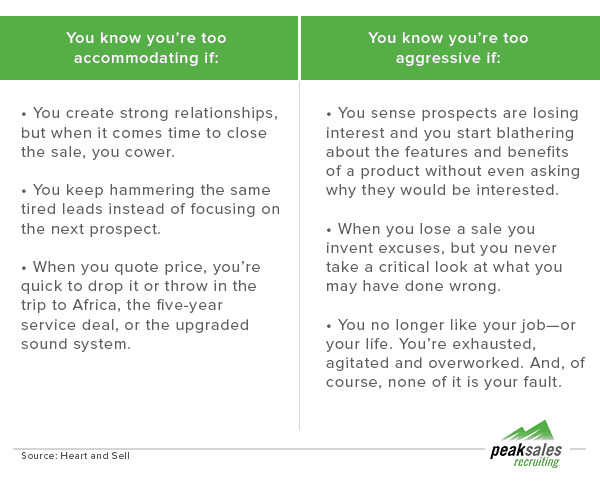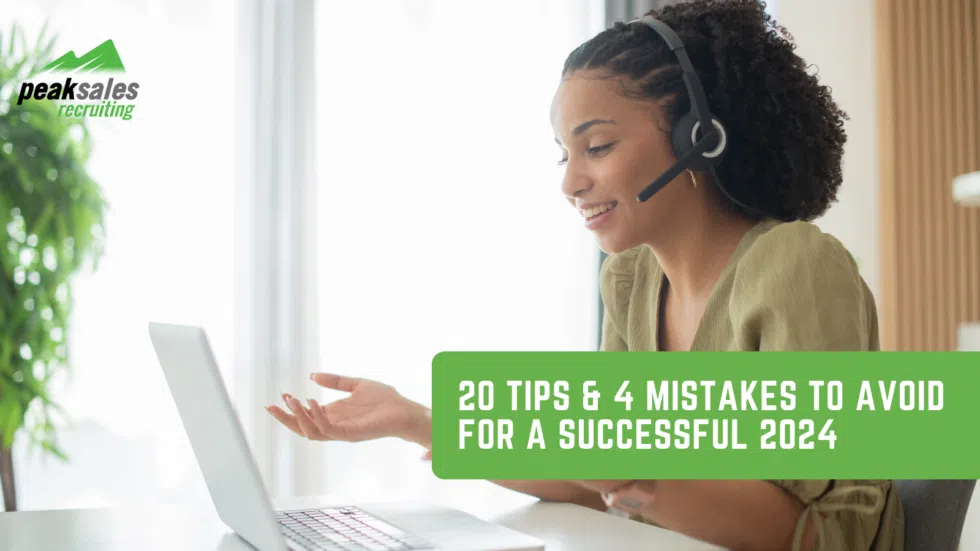Today’s buyers are overwhelmed with too much information — delaying purchasing decisions and resulting in lost sales. In order to compensate, several sales professionals are either over-accommodating or creating high pressure which alienates prospects in the process.
So, how does a salesperson meet sales targets while satisfying the customer’s desire for a heartfelt, authentic sales approach? Shari Levitin‘s new book Heart and Sell answers just that.
In Heart and Sell, Shari shows you how to blend the new science of selling with the heart of human connection in order to reach more prospects and consistently close more deals.
Peak Sales Marketing Specialist and Sales Hiring Expert Taylor Dumouchel caught up with Shari to discuss her new book:
Shari, what was your inspiration for writing Heart and Sell?
Several years ago I was teaching a sales seminar in Mexico, when a salesperson in the back of the room raised his hand. He said he liked the strategies I was teaching, then he asked, “But won’t the customer feel sort of, well, manipulated by all of these sales techniques?”
I had never been asked that question before, and it threw me.
Fortunately, that evening I was invited to dinner with the top salespeople at the seminar. An older gentleman introduced himself as Apapacho. “Apapacho?” I asked. I hadn’t heard that name before.
He said it was a nickname meaning ‘hugger,’ or ‘affectionate one.’” He told me that he’d never received formal sales training, but absolutely loved his customers. At that moment, I knew I had my answer for the salesperson in the back of the room and, much later, the idea for my book, Heart and Sell.
This experience set my mind in motion. I started to ask myself some questions. What makes a great salesperson: nature or nurture? What’s more important in selling: techniques or genuine empathy? What if you could combine the two — both heart and sell? Seeking answers to these questions, I made it my mission to study top sales leaders and salespeople in various industries.
For each person I studied, I asked myself:
- What did they say—and what didn’t they say?
- How did they do it?
- Did they have secret tricks or best practices they could share?
I learned that top salespeople know how to balance the science of selling with heartfelt connection. They also understand that, unless they really know themselves, they’ll never truly connect with their customers—or anyone else, for that matter.
They know that what you do matters, but who you are matters more.
The Ten Universal Truths contained in my book are all about achieving that balance and connecting more deeply with your authentic self.
The book is a model for how to blend the new science of selling with the heart of human connection in order to reach more prospects and consistently close more deals. What makes selling with the heart more effective?
We live in a world of fake news, or what’s been called, “The Post Truth Era.” Trust is more difficult to build than ever before. A recent Gallup poll found that customers consider salespeople such as real estate agents, auto dealers and phone reps among the least ethical of all professions; only lobbyists and members of Congress ranked lower! If we as salespeople aren’t coming from a place of integrity, customers know it instantly. Today’s buyers, as I’m sure you’ll agree, are savvier than ever, and they’re wary of staged presentations and canned pitches.
It’s the combination of both skills and character, the mixing and blending of these ingredients together, that creates long term success. In his book, The Road to Character, David Brooks (opinion columnist for the New York Times) discusses the difference between “resume virtues” and “eulogy virtues.” According to Brooks, resume virtues are those skills you bring to the marketplace—qualities like drive, competition, and gregariousness. The eulogy virtues, on the other hand, are the ones people will talk about at your funeral. Were you kind? Honest? Empathetic? Loyal? In the book, he states, “Many of us are clearer on how to build an external career than on how to build inner character.” We need to ask ourselves, “What do I want my legacy to be? How do I want to be remembered?” Selling with heart means knowing what to say and do, but sustained success requires virtues like integrity, empathy and optimism.
How can a salesperson build a strong relationship with a prospect but be assertive at the same time?
Top-performing sales reps build a structure to ensure they’re performing the right sales steps in the right order. But they also know when to turn the heat up or down depending on the emotional reaction of their prospects.
In my experience, many salespeople either lead too much with relationship or are too aggressive. They don’t have the structure, the mastery, or the confidence to make it, as Goldilocks says, “JUST RIGHT.”
The Middle Way—Respectfully Assertive
Respectfully assertive salespeople continually ask themselves:
- Am I providing valuable insights that are distinct from my competitors?
- Is my prospect bored?
- Is she engaged?
- Do I need to ask tougher questions?
- Is she fearful? Have fight-or-flight hormones hijacked her brain?
- Should I ask them to buy now after that obvious buying signal?
- Should I back off?
What are some techniques you recommend for salespeople to ramp up their rapport-building techniques and establish a sense of trust?
Most salespeople have been told that, to earn trust, you have to get your customers to like you. That’s backwards. Earning someone’s trust doesn’t start with getting customers to like you. It begins with empathy; with you caring about them. Trust follows empathy. Otherwise, we’re just another salesperson with a hand in our prospect’s pocket.
You become more empathetic by establishing rapport. Rapport is a precursor to empathy. You’ve almost certainly heard about establishing rapport in sales seminars you’ve taken. In my experience, most salespeople are taught to view rapport simply as a box to check. Match and mirror. Pace. That’s all useful, but where’s the humanity that animates this new relationship with your prospect?
Here is a sampling of methods to build rapport:
1. Be interested in their battles.
Each time you meet a prospect, find at least one positive character trait and offer a sincere compliment. Not just “Hey, that’s a cool jacket,” or “Wow, what a beautiful bracelet!” Is he patient with his kids? Is he funny? Is her work fascinating?
2. Notice the purple hats.
You’ve probably heard the expression, “We need to talk about the elephant in the room”. Think of it like this: If I invite you to our home in Park City, Utah for dinner, and there in the foyer is a circus elephant squatting next to the grand piano, would you say anything? If you don’t, it’s going to be awkward for both of us. Likewise, when you meet someone whose appearance shouts, “Look at me!” You have to look. You have to comment. “Nice hat! Where’d you get those feathers?” or “How long did it take you to get forty-six tattoos?” Selling would be so easy if we only had to sell to people with our appearance, background, and tastes. But that’s not how the game is played.
3. Let them talk about themselves.
We trust the people who take the time to get to know us. But giving someone else the floor is difficult to do. Research from the Harvard Business Review shows that, on average, people spend 60% of their time talking about themselves, a number that increases to 80% on social media. The Greek philosopher Epictetus said it first: “We have two ears and one mouth, so we can listen twice as much as we speak.”
You talk about the power of the ‘right questions’ and how questions help us fall in love. How can a salesperson determine what questions are right for him or her?
Getting the attention of your prospects, gaining commitment and reaching consensus now is the greatest challenge salespeople face. In this age of information overload it’s difficult for prospects to sort through the clutter and the complexities of your product offering. You need to guide the conversation and travel the most direct route.
As an analogy, can you imagine driving from one end of the country to the other without directions? You may eventually get to your destination, but without a map or GPS, you’ll take far longer than necessary.
Your customers may not be as flexible. When your presentation is too long or off-point due to a lack of precision, your customers, to continue the analogy, may simply run out of gas. Your customers today are busy. They’re overwhelmed. Side-road conversations that aren’t relevant to them are simply an annoyance. You’ve got to keep them speeding down the Interstate; not getting lost on side roads.
Your job is to ask questions, I call this the discovery phase, so that you can provide solutions that are specific to their needs—the WIFM or “What’s In it For Me?” Your questions must follow a logical order—in other words, you start by gathering facts, and then progress to deeper questions that uncover customers’ problems and emotional motivators.
Craft a Discovery that helps you uncover what I call The Big Four:
- First Level Questions: Get the facts about your customer’s current situation with First and Second Level Questions.
- Second Level Questions: Find the problem- Dig deep to determine the implications of the problem.
- Third Level questions: Discover the dominant buying motive or emotional motivators
- Uncover hidden objections or concerns.
In Chapter 8, you discuss how most salespeople incorrectly assume that they can create a sense of urgency by threatening scarcity or appealing to greed. What is the most effective way of creating a sense of urgency?
No one cares if there’s only two left, or the price goes up next week, if they don’t want or need what you are selling in the first place. You can’t hijack your customers’ minds and force your incentives upon them.
You can’t create urgency without a prospect’s permission. But people will give you permission if they are emotionally committed to what you are selling. When you align what you’re selling with what they’re feeling, they will open their hearts. And their wallets.
I’ve seen countless salespeople ask poignant discovery questions only to deliver a generic sales presentation. At this point, your customers want to know one thing: What’s in it for me? (WIFM). They want to know you can fulfill their desires and solve their problems. But before you can link their needs with your offer and make a compelling case for your product, you must confirm that you got the information right.
In other words, no matter what you’re selling, or whom you’re selling to, you must complete each of these three steps in order to build that vital sense of emotional urgency.
Here’s the process:
• Confirm your customer’s wants, needs, and concerns.
Salespeople often assume they’ve discovered the accurate information, but they miss or misinterpret critical facts. And we all know what happens when we assume. Depending on your sales process, you can either launch into a confirmation statement directly after your Discovery or at the beginning of a follow-up meeting. Information confirmation is, simply, the act of repeating back the information you heard and getting confirmation that what you heard is, in fact, what the customer meant.
• Link their wants and needs to your product or service
- Good salespeople do a Discovery.
- Better salespeople ask the right questions in the Discovery to uncover the Big Four: First Level facts, Dominant Buying Motive (DBM), Problems, and Objections.
- The Best salespeople actually take the information from the Discovery and link it emotionally to the features and benefits of their product. And then gain comittment. Our brains love stories, but our hearts cherish them even more. For years, I told this story to couples who, at the moment of truth, just couldn’t make a decision. It almost always pushed them over the edge.
• Create an emotional experience through evocative stories and a memorable sales experience
New research confirms that hearing the right stories at the right time cause the brain to release oxytocin, the neurochemical responsible for empathy. Oxytocin, dubbed the “Moral Molecule,” by neuroeconomist Paul Zak, makes people more trustworthy, generous, charitable, and compassionate! Researchers experimented on customers in a sales environment, having them ingest oxytocin through their nasal cavity to see if they would become more trusting and empathetic. (I figure if you can get a complete stranger to sniff an unknown chemical, he probably trusts you already!)
Even if your prospect is interested in the facts of your offering, he won’t be inspired to act without his emotions leading the charge. Your customer may think your solution is right in his head, but he’ll only take action when it feels right in his heart.
You mention that top performers celebrate the word “no” and learn from it. Why do salespeople need to hear the word “no” and what techniques can they use when they hear it?
Salespeople are often taught that No’s are a necessary evil, or a hurdle to overcome. But top performers think of No’s differently. They look for the No’s. Instead of setting goals for the number of Yes’s they get, they actually celebrate their No’s and learn from them. As Winston Churchill said, “Success consists of going from failure to failure without loss of enthusiasm.”
I find that many salespeople simply don’t know what to do when they hear the word “No.” So here are some guidelines:
Listen fully before you respond. Don’t become defensive. I am always amused at salespeople who apologize or criticize customers when they disagree. Breathe. Let the customer finish their train of thought. Now ask yourself: is this a deal killer? Many objections are valid—the customer just needs more information. Some test you to gauge if you will answer their concerns truthfully.
When I hear an objection in the sales process, I listen fully. I validate the concern by saying “I can absolutely see why you’d feel that way,” or “That’s a valid concern.” I may even state their objection more strongly. “You certainly don’t want to invest in a product that doesn’t work for you. It sounds like you have enough on your plate.” Then I wait for agreement. When I hear it, I’ll confirm: “This is good. We’re on the same page.”
You can’t bring someone to your side of reasoning if you won’t first move to theirs! Now, you can share more information, ideas, and an awesome rebuttal.
Remember that questions are often objections in disguise. One of my business school students worked for an aircraft-part manufacturer attempting to close a major deal with the government. The customer asked, “How much testing did you do?”
My student was taught to ask himself: What’s the real concern here? What’s the ‘no’ or the barrier underneath the question? By doing so, he discovered that what the customer was really asking was: Is this model safe? Do we need to launch additional testing before bringing it to market?
Again, think before you act. No never means no. Which means you should never bulldoze your way through with a rebuttal. Instead: listen, analyze, and respond to the concerns the customers express—and the concerns they may not even know to express.
Know when to isolate a “no.” You’ve had it happen before: Customers that rattle off question after question, concern after concern. It sounds like an endless sea of “no’s.” Don’t give up. Instead, ask a question that isolates the customer’s concern and listen carefully for the response.
A hotel company who books large events and weddings was working with a very upscale client. One of their top salespeople, Natasha, had answered about 10 questions when the customer asked, “Do you allow pets?”
Instead of answering yes or no, she isolated the concern by asking, “Would that be important to you in your decision to secure a venue?”
The customer thought a moment and said it would be nice, but not essential.
Some questions aren’t a “no” at all. You just need to isolate the deal breakers from the chatter.
Finally, can you tell us how using the strategies mentioned in your book, and selling with the heart, has helped you?
Writing Heart and Sell and attempting to live the truths in Heart and Sell, has helped me redefine happiness and contentment. Mastering happiness is the same as mastering any skill. Whether you’re a professional artist, musician, or athlete, it takes persistence and time to become a master.
You need to do a lot of little things right; it requires tireless determination and consistency in your attitude and efforts. It can be a real challenge to wake up happy everyday. That’s why you need to make a conscious choice to incorporate rituals of happiness into your daily practice.
Positivity is a skill. Like a golf game, it must be examined, practiced, and perfected. Make these small rituals a part of your life—and I guarantee you’ll see a big impact.
I also learned from TED speaker, Sean Anchor, that this “Happiness fuels success, not the other way around.”— when you feel positive, dopamine floods your system and not only makes you happier, but turns on the learning centers in your brain, making you more receptive to new ideas and solutions. I not only feel happier, but mu business is booming.
Most importantly, I have learned why I do what I do, so I keep on going when times are tough.
As Frederick Nietzsche said, “He who has a why can endure any how.”—Don’t just ask yourself why you do what you do. Ask yourself: who do you want to be? What gives your life meaning? This is the most important question we can ask ourselves. It’s a much more important question than, “What are my goals? What actions must I take to reach them?” Everything, from your goals to your strategies, flows from knowing who you are and why you’re doing something.
I’ve learned that to get trust, give trust. To earn respect, give respect. To be applauded for your talent, look for talent in others. The happiness that comes from excellence cannot be bought; the joy derived from sharing your heart cannot be measured. Building skill matters, but building character matters more.
Click here to order your copy of Shari’s new book, Heart and Sell.
About Shari:

Companies including Hilton, Hyatt, Adobe, RCI, Jaguar, Wyndham Worldwide, financial service groups, and countless individuals have all benefited from Levitin’s pioneering Third Level Selling™ techniques. Shari Levitin Group also includes Levitin Learning, a unique virtual university with more than 240 online courses. Levitin is also an adjunct professor at the University of Utah, David Eccles School of Business, teaching their first ever graduate sales course entitled Pitch Perfect.
relpost-thumb-wrapper
Related posts
close relpost-thumb-wrapper
Latest posts by Eliot Burdett (see all)
- 31 Must-Know Sales Follow-Up Statistics for 2024 Success – December 21, 2023
- 7 Success Characteristics That Define Top Performers – December 19, 2023
- 5 Reasons Your Top Employees Quit (Stop Doing This to Stop Them Leaving) – December 14, 2023








